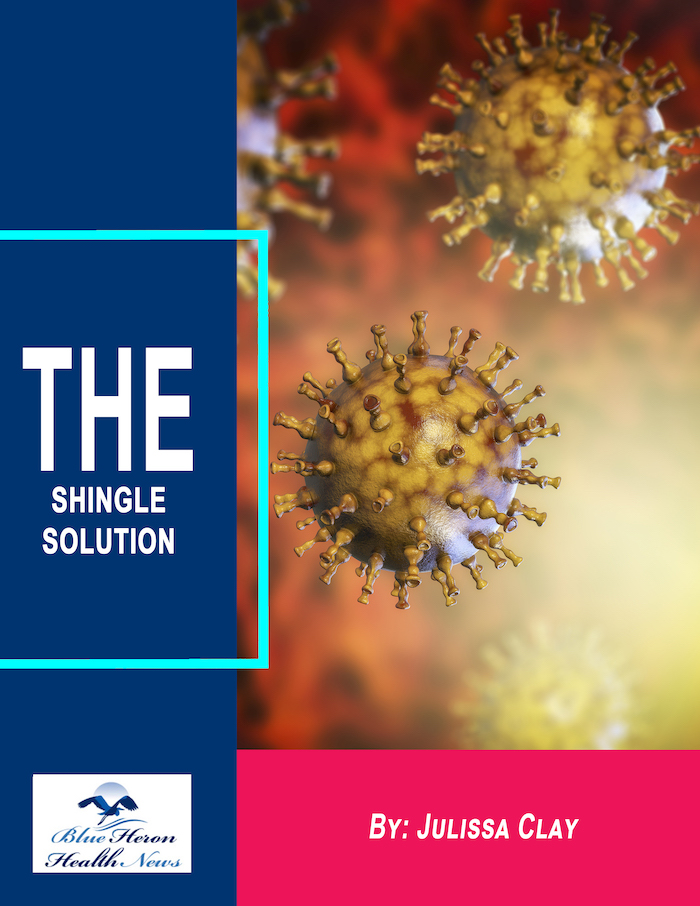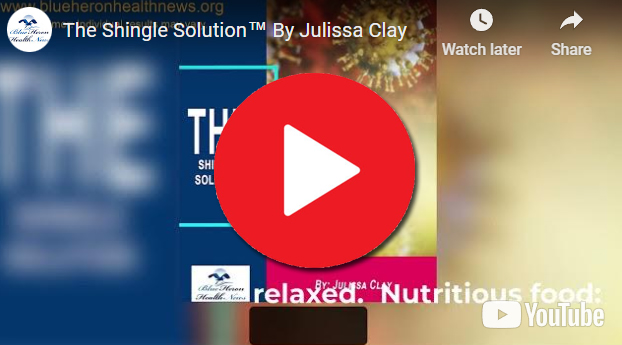
The Shingle Solution™ By Julissa Clay This eBook includes a program to treat the problem of shingle naturally. The author of this eBook, Julissa Clay, a practitioner in natural health, has killed the shingles causing virus completely to overcome the problem of PHN or Postherpetic neuralgia, one of the common complications caused by shingles. This program helps in melting PHN in a few weeks and make shingles a forgotten nightmare.
How can one manage shingles with diabetes?
Treating shingles if you have diabetes requires a multi-pronged approach that addresses both the shingles attack and the diabetes-related issues. Diabetes makes it difficult to treat and heal shingles, so controlling blood sugar levels is important, obtaining early antiviral medication, and adopting measures to promote overall healing.
Here’s how to treat shingles properly when you have diabetes:
1. Control Blood Sugar Levels
Keep blood sugar well controlled throughout the shingles attack, as elevated blood glucose can weaken the immune system, slow healing, and lead to complications.
Check blood sugar more often—while sick, your blood sugar can swing more than normal.
Collaborate with your healthcare team to modify your insulin or medication regimen if necessary.
2. Initiate Antiviral Therapy Early
Antiviral medications like acyclovir, valacyclovir, or famciclovir are necessary to reduce the length and severity of the shingles rash. Medications work best if started within 72 hours of rash development.
Talk over with your doctor the use of antiviral medication as soon as symptoms emerge.
Remember, diabetes can make complications more difficult, so the earlier treatment begins, the better.
3. Treat Pain with Caution
Shingles are excruciating, and diabetic nerve pain can be tough to get rid of, especially when you have neuropathy.
Pain medicine that can be bought without a prescription (acetaminophen, ibuprofen) may relieve the pain, but choose medicine that will not affect your blood sugar.
For nerve pain (postherpetic neuralgia), your doctor may prescribe medications like gabapentin or pregabalin.
Topical creams like capsaicin cream or lidocaine patches can also provide relief at the site.
4. Skin Care
Shingles rashes are tender and may result in skin infection, which is more severe in diabetics.
Keep the involved area dry and clean to prevent bacterial infections.
Apply calamine lotion or cool compresses to soothe the rash and reduce irritation.
Ensure any open blisters are covered to avoid further infection.
Do not scratch the rash to minimize the risk of secondary infection.
5. Nurture Your Immune System
Individuals who have diabetes have a weak immune system that could make infection more difficult to recover from, such as shingles.
Stay healthy by maintaining a balanced diet consisting of fruit, vegetables, lean protein, and whole grain products to boost your immune system.
Make sure to get sufficient amounts of vitamin C and zinc, both necessary to keep the immune system working correctly.
Stay well hydrated and avoid excessive stress, which can weaken the immune system and affect blood sugars.
6. Watch for Complications
Postherpetic neuralgia (PHN) is a common complication of shingles, particularly in diabetes patients. PHN causes throbbing pain even after the rash resolves.
If pain continues for over several weeks following the resolution of the rash, consult your doctor for additional pain control options.
If shingles affects the eyes (ocular shingles), vision problems could ensue. Inform the physician immediately if you experience any vision disturbance.
7. Track Symptoms and Treatments
Track your blood sugar, pain, and rash appearance so that you can inform your healthcare provider.
Document your symptoms using a symptom journal or symptom-tracking app to make sure proper adjustments of treatments.
Ensure you’re staying on top of your diabetes management routine, including regular blood glucose checks and adjustments to medications if needed.
8. Prevent Future Shingles Outbreaks
Once you’ve recovered from shingles, consider discussing the shingles vaccine with your healthcare provider. Although the vaccine is typically recommended for older adults, those with diabetes over age 50 may benefit from the vaccine to reduce the risk of future outbreaks.
The shingles vaccine has been shown to be safe and effective in preventing shingles and its complications, including PHN.
9. Rest and Recovery
Adequate rest is essential for healing, especially when managing both shingles and diabetes.
Ensure you’re getting enough sleep and rest to support your immune system and overall recovery.
10. Regular Check-Ups
Visit your healthcare provider regularly throughout the shingles outbreak to ensure that your treatment is effective and your blood sugars remain in control.
Your healthcare provider may need to modify your diabetes treatment plan if your blood sugars are not under control during the shingles outbreak.
To manage shingles with diabetes, it is necessary to keep blood sugar under control, receive early antiviral medication, and maintain good skin care in a bid to avert complications. Early pain control and follow-up of symptoms also help you heal well. Remaining close to your healthcare team ensures that your management of shingles and diabetes care is properly coordinated.
Would you like me to provide more information regarding specific treatments or resources to help with the management of both conditions?
Both conditions should be treated separately with consideration to both, because they have the tendency to complicate one another. The first aims are controlling the shingles attack, avoidance of complications, and good management of heart disease during the attack of shingles. The important strategies to be used include:
1. Early Antiviral Treatment
Initiate antiviral drugs early: Early antiviral drug treatment with medication (e.g., acyclovir, valacyclovir, or famciclovir) can reduce the length and severity of shingles symptoms, as well as decrease the risk of complications, such as post-herpetic neuralgia.
Timing is crucial: To function optimally, antivirals need to be taken during the first 72 hours since the rash starts. If you have heart disease and get shingles, you should visit your doctor immediately.
2. Pain Relief
Avoid pain drugs that damage the heart: If you are trying to treat the pain of shingles, use pain drugs that will not injure individuals who have heart disease.
NSAIDs (like ibuprofen) actually increase blood pressure and are tough on the heart, especially in individuals who have hypertension or heart failure. Consequently, acetaminophen (Tylenol) is widely utilized as a safer option for the management of mild to moderate pain.
For severe pain, opioids or local anesthetics (like lidocaine patches) can be prescribed by your doctor. These need to be used with caution in people with heart disease, especially those who are at risk for arrhythmias or heart failure.
3. Monitor Heart Health
Monitor blood pressure and heart rate: Shingles and shingles pain can increase stress and blood pressure, which may cause problems for people with heart disease.
Monitor blood pressure daily to maintain it within your desired range.
Heart rate should also be observed, because intense pain or shingles-associated stress can be the cause of palpitations of the heart or arrhythmia in certain patients.
Decrease in stress: Shingles contribute to significant emotional upset from discomfort and pain. Because stress is recognized as an established risk factor for heart disease, utilize a decrease in stress with relaxation therapy using deep breathing, meditation, or restorative yoga.
4. Manage Inflammation
Control inflammation: Both shingles and heart disease can involve systemic inflammation, so it’s essential to manage both conditions. Follow your heart disease treatment plan, which may include:
Anti-inflammatory medications: These may include statins (if prescribed) and other heart-specific medications that reduce inflammation.
Dietary changes: A heart-healthy diet that includes anti-inflammatory foods, such as fatty fish, fruits, vegetables, and whole grains, can help reduce overall inflammation in the body.
5. Limit Cardiovascular Stress
Avoid physical effort: Fatigue and physical pain caused by shingles is best avoided, therefore it is not a bad idea not to do much physical exertion. Exertion will be extra burden for the heart, especially on patients with known heart disease. Resting allows healing.
Sleep and rest: Ensure you rest properly to aid your immune system to fight off the infection and allow your heart enough time to recover.
6. Follow-up Care
Scheduled visits: Visit your doctor on a regular basis to monitor both the resolution of the rash of shingles and your cardiovascular health. Call your doctor right away if you experience new symptoms or worsening in your heart condition (such as chest pain, shortness of breath, swelling, or racing heart rate).
Post-herpetic neuralgia (PHN): If you continue to experience nerve pain after the shingles rash has cleared up (typical in older adults or individuals with weakened immune systems), visit your physician. Treatment of PHN is especially significant for heart disease patients, as chronic pain may raise stress levels and blood pressure.
7. Prevention and Vaccination
Get the shingles vaccine: The Shingrix vaccine is recommended for adults 50 years and older and for those at high risk of shingles, including people with heart disease. Vaccination can reduce the risk of developing shingles and, if shingles does occur, reduce the severity of the infection.
Regular cardiovascular management: Be sure to take your heart disease treatment regimen, including any medications, lifestyle modifications, or interventions your physician prescribes. Maintaining your heart condition in good control will enhance your potential to recover from shingles.
Key Takeaways
Antiviral medication must be started early to minimize the severity of shingles.
Pain control must be specifically managed to prevent medications that are harmful to heart disease.
Close daily monitoring of cardiac function, avoidance of stress, and adequate rest are essential during an attack of shingles.
Shingles immunization is a major preventive measure, especially for individuals with heart disease.
Working in a multidisciplinary team and coordinating closely with both your dermatologist and cardiologist, you can manage shingles and heart disease fairly effectively.
Do you need more specific recommendations regarding pain control or other aspects of shingles management in heart disease?

The Shingle Solution™ if you are suffering from shingles then The Shingle Solution can be the best program for you to relieve your pain and itching by using a natural remedy. It describes the ways to use this program so that you can feel the difference after using it as directed. This natural remedy for shingles can also help in boosting your immune system along with repairing your damaged nerves and relieve pain and itching caused by shingles